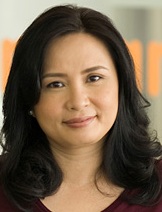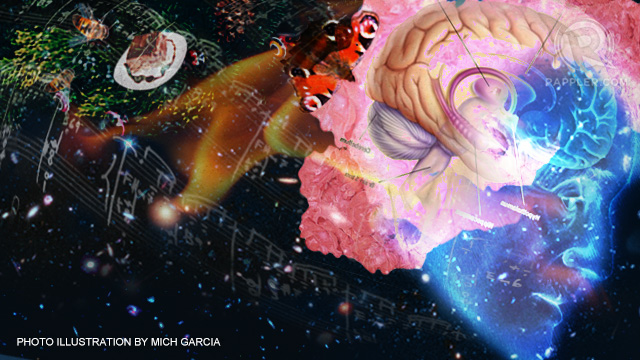SUMMARY
This is AI generated summarization, which may have errors. For context, always refer to the full article.

As you settle from the small-, medium- and big-sized bangs of celebration you had over the holidays, you will most likely find yourself suffused with memories that were fed by all your senses. They will include the sights of holiday decor, the sound of cheer, fireworks and holiday music, the array of tastes offered by all kinds of feasts, the touch of children’s warm bodies as you hugged them, the smell of grilled, boiling or frying nature coming out of the kitchen, as well as perfumed gifts.
Your memories form a kaleidoscope of all these. You don’t single out these experiences and flake them into scrapbooks strictly labelled “visual,” “auditory,” “olfactory,” “taste,” or “touch.” If you do, that is another story for another science column, if not a referral for a doctor’s appointment. But once upon a time, brain scientists did and now they have evidence they were wrong to have done so.
Lawrence D. Rosenblum is a professor of psychology at the University of California, Riverside and I read his piece in the January 2013 issue of the Scientific American called “The Confederacy of the Senses.” He is also the author of “See What I’m Saying: The Extraordinary Power of Our Five Senses” (W. W. Norton, 2010).
In it, he cited recent studies and experiments in the last 15 years that support the understanding that even if there are brain parts that are dominant in processing inputs from each of the senses, the brain cannot help but nose around and meld information from all the senses. Moreso, there are parts in our brain that seem to overlap in the way they can process sensory information. This is why, he said, the deaf can understand someone’s speech so much better if they read the lips of the talker. This is even more effective when facial expressions are considered.
We used to think that it is because when no input from one sense is being received, other parts compensate. But while “compensation” seems to be observed from the outside, inside our brains, it is really the same brain part learning to process signals it was not known to process till now. 
For example, around 6 years ago, a clinical device called “brainport” came out. Doctors tried it on a woman who lost her balance. It is some sort of helmet which acquired signals from the environment through “antenna” placed in her tongue. With it, the woman, from signals processed through her tongue to her brain, was able to balance herself and walk on her own. In other words, brain parts for taste learned how to decode signals to keep her world from spinning.
This is the same thing I discovered in an interview in 2011 by April Fulton with experimental psychologist Charles Spence in NPR.org. Charles Spence heads the Crossmodal Research Laboratory at Oxford University. His experiments were driven by the same question: how does the brain process and put together all the information coming from the different senses? He takes it further by speculating on how the answers from his experiments could help us come up with better design for the things we produce and experience. He has started doing experiments on food, on how various colors change our taste perception and even how certain music enhances specific foods.
Red is known to signal sweetness in beverage for instance, relative to other colors given the same amount of sugar. In one experiment, he found that Pavarotti music enhanced coffee/chocolate flavored desserts while playful lilting music like the “Carnival of Animals” made fruity meringue a much more enjoyable experience than with another kind of music.
This, I think, also has implications in further debunking Howard Gardner’s Theory of Multiple Intelligences. This theory was debunked sometime in 2011 because evidence simply did not support it. Gardner’s theory states that there are 9 kinds of intelligences and as such learning styles, in that some are visual, musical, others spatial etc.
But there have been no evidence that these intelligences really exist as categories. For example, a visuo-spatial learner, although strong at navigating spaces, is not necessarily one-tracked about learning everything only in a visuo-spatial manner. Evidence so far about how we learn suggests that the brain is one versatile universe armed with overlapping, multi-tasking tentacles to know the world. For education, it means it is good to know your strength but you should not limit your learning to ONLY what that strength can handle.
“Sensing” is really only part of “experience” yet, the latter is more than the sum of all that we sense. Our brain has its own kitchen, churning out sensory recipes that lay out how we perceive the world. They are concocted by the supremely versatile neuronal ensembles of cooks that put the ingredients of experience together: a poet’s cathedral of orange spokes, tossed in crisp fractal-shaped romaine leaves with slivers of free-ranging chicken, nudged in parts by hints of honey and mustard, tossed by Jobim’s “Waters of March” playing in the background, in the company of old friends.
One beautiful experience and no one grand master chef needs to bow for applause. – Rappler.com
Maria Isabel Garcia is a science writer. She has written two books, “Science Solitaire” and “Twenty One Grams of Spirit and Seven Ounces of Desire.” Her column appears every Friday and you can reach her at sciencesolitaire@gmail.com.
Add a comment
How does this make you feel?
There are no comments yet. Add your comment to start the conversation.